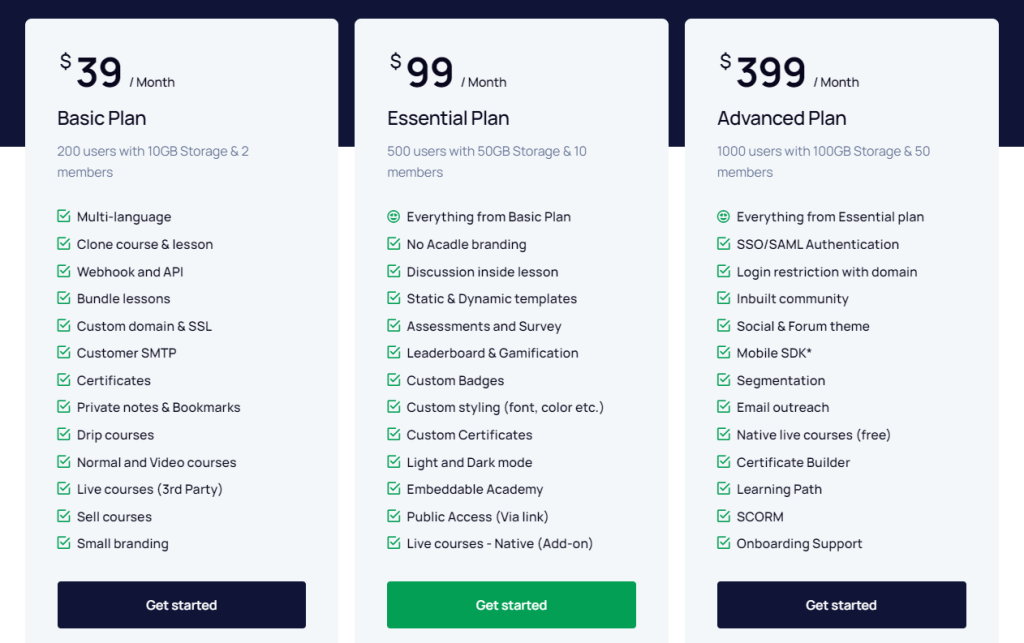Affordable LMS Pricing: How to Choose the Best Plan for Your Business
A Detailed Guide for 2024
Introduction
Choosing the right Learning Management system (LMS) for your business is crucial, especially when it comes to offering online courses, employee training, or onboarding new team members. One of the most important factors in this decision is LMS pricing. With so many options out there, finding an affordable LMS that fits your needs without breaking the bank can be tricky. In this guide, we'll break down the different pricing models, what impacts the cost, and how to pick the best plan for your business in 2024.

Why LMS Pricing Matters
When you're investing in an LMS, it’s not just about finding the cheapest option—it's about finding the best value. You want to make sure you're getting the right features at a reasonable price, so you don’t overspend on things you don’t need or end up with an affordable LMS that lacks key functions for your business.
What Impacts LMS Pricing?
Several factors can influence the price of an LMS:
- Number of Users
Most LMS platforms charge based on how many users (or learners) you have. Some offer tiered pricing, while others use a pay-per-user model. As your user base grows, it’s important to know how the costs will increase.
- Features
Basic LMS plans usually come with essential features like course creation and tracking learner progress. If you need advanced tools like custom branding, gamification, or integrations with other platforms, you'll likely need to pay more.
- Cloud vs. On-Premise
Cloud-based LMS platforms typically come with a subscription fee, making them a more affordable choice for small to medium-sized businesses. On-premise LMS platforms, however, require a one-time purchase and maintenance, which can be costly upfront but might save money in the long run.
- Support and Training
Some LMS providers include basic support in their plans, while others charge extra for premium support, such as 24/7 help or dedicated account managers. Make sure to consider whether you’ll need extra help or training when choosing a plan.
- Scalability
If your business is growing, you’ll want an LMS that can grow with you. Some providers offer scalable pricing or discounts for larger user bases, which can help keep costs in check as your needs expand.
Common LMS Pricing Models
Here are the most popular LMS pricing models:
- Pay-Per-User
This model charges based on the number of active users. It’s flexible, but if you expect to grow quickly, costs can add up.
- Subscription-Based
You pay a fixed monthly or annual fee for access to the LMS. These plans often include a set number of users and basic features, with the option to upgrade as needed.
- One-Time License Fee
With this model, you pay upfront for lifetime access. It’s common with on-premise LMS platforms and can be a good deal if you don’t want to worry about ongoing payments.
- Freemium
Some LMS providers offer free versions with limited features, allowing you to upgrade to a paid version if needed. This is a great option if you want to test the platform before committing.
- Custom Pricing
For large organizations or those with specific needs, many LMS vendors offer custom pricing. This is usually based on the number of users, features, and any special requirements.
How to Pick the Best LMS Plan for Your Business
To find the right plan, follow these steps:
List Your Needs
Start by identifying what you need from an LMS. How many users do you have? What features are non-negotiable? Do you need an affordable LMS that can scale with your business? This will help narrow down your options.
Look Beyond the Price
Don’t just focus on the upfront cost—consider the total cost of ownership. This includes any hidden fees for extra users, support, integrations, or custom features.
Test the Platform
Many LMS providers offer free trials or demos. Take advantage of these to test how the platform works and whether it’s a good fit for your business.
Think About Growth
Choose an LMS that can grow with your business. Some platforms offer scalable pricing or volume discounts as your user base increases.
Compare Plans
Don’t be afraid to compare different LMS providers and their pricing models. Look for the best value, not just the cheapest option.
Affordable LMS Solutions for 2024
If you're searching for an affordable LMS without sacrificing quality, here are some great options:
- Acadle
Acadle offers flexible pricing and a robust set of features, making it a great choice for businesses of all sizes. Whether you're just starting or growing fast, Acadle’s LMS pricing is designed to be scalable.
- TalentLMS
TalentLMS is known for its easy-to-use interface and affordable plans, including a free version with limited features. It’s a solid choice for small to medium businesses.
- Moodle
As an open-source platform, Moodle is highly customizable and free to use, although you may need to invest in hosting and support.
Conclusion
Choosing the right LMS pricing plan for your business is about balancing cost with the features and flexibility you need. By understanding the different pricing models and carefully evaluating your options, you can find an affordable LMS that helps your business grow.
Start your LMS free trial with Acadle today! Experience the power of our easy-to-use LMS platform, tailored to boost your learning success. No credit card is required—just sign up and explore!
